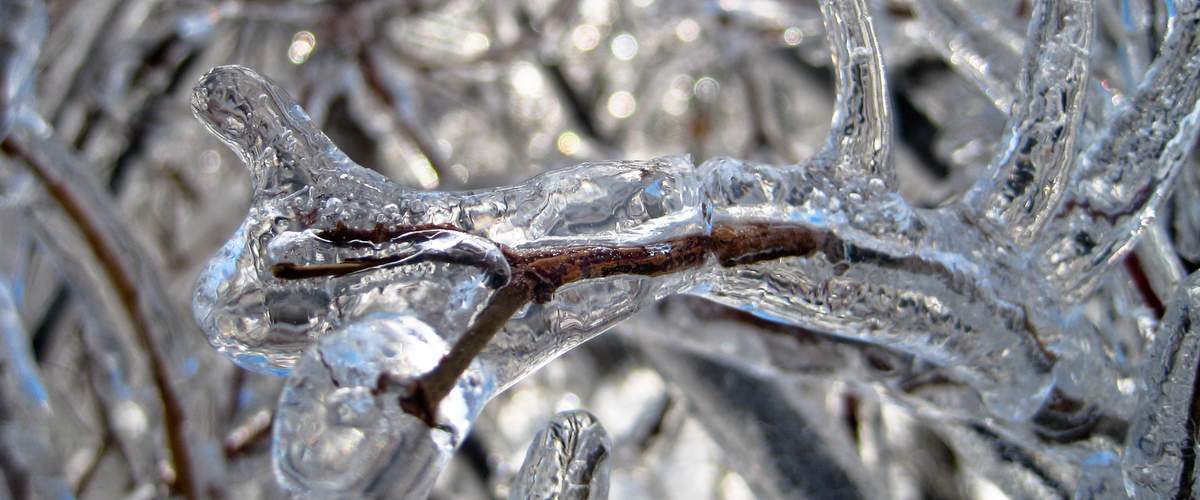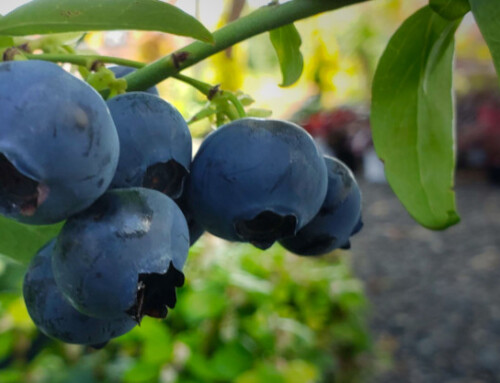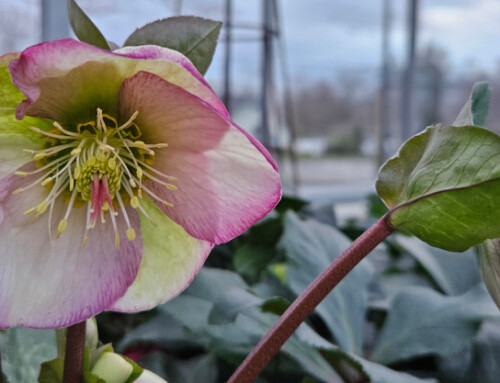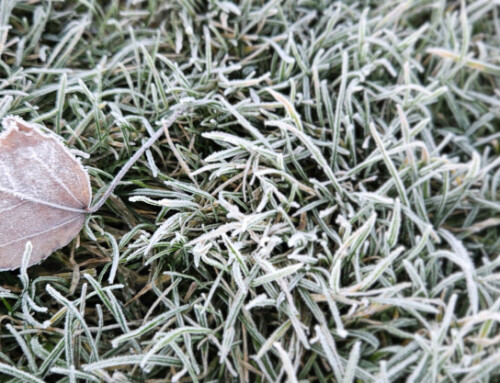Days of sub-freezing temperatures, a dusting of snow, stiff winds, and a north-county ice storm for the record books. Suffice it to say, winter is in full swing in the Pacific Northwest, and whether you’re in the midst of cleaning up after the last storm or just want to be prepared for the next time wicked weather hits, here are some tips to take care of your trees.
First, take some time to assess the damage to any of the trees around your yard. If any tree limbs have cracked or a multi-trunk tree has split but has not separated completely and the bark is still attached to the tree, you may be able to repair the damage. Prune back the branching to remove some of the weight around the edges of the canopy first. Then, with some help, lift the limb back into place and drill a hole through the broken portion of the branch and through the tree. Slide a bolt or threaded rod through the hole and thread nuts and washers onto both ends to hold the limb in place. If you’re able to relieve enough of the weight on the branch beyond the break to close the split or crack, you may be able to stabilize the tree enough for the wound to heal properly.
Additionally, for damaged branches where the bark tore away from the tree but remained partially attached, you may be able to salvage the bark using electrical tape. As soon as you can catch a break in the rain, tape the bark back onto the tree and wrap the tree with electrical tape as you would wrap a sprained wrist or ankle. Over time, the tape will stretch as the tree grows and eventually break and fall off, but in the meantime, it will secure the bark in place and allow the tree to heal.
If, however, your tree has sustained damage beyond repair, you may have no choice but to finish the pruning job that the storm started. When pruning a tree, whether large limbs or small branches, choosing the right place to prune is key to helping a tree recover properly. The ideal place to prune off a branch is just beyond the point at which it diverges from the trunk or another branch. Look closely at the place where a branch splits off the trunk of a tree and you’ll see a swollen area around the base of the branch called the collar. When pruning, always cut at a slight angle away from the bottom of the joint to preserve the collar; doing so will allow the tree to heal properly. Never cut branches flush to the trunk or the adjoining branch as a tree is unable to properly scab over such a cut and may eventually rot.
Finally, the most common inquiry I’ve received in the days since the ice storm is what I recommend using to seal wounds on a damaged tree. My answer? Nothing! Pruning sealants—whether paint-on or aerosol—provide an imperfect seal at best, and eventually, water will work its way in behind the sealant. At that point, the wound will be unable to breathe properly and rot can easily develop. So, the best sealant is a combination of proper pruning and the tree’s natural ability to heal.
Although the weather has moderated, winter is far from over—last year, February brought snow, ice and cold weather for nearly the entire month—so get your trees back in shape and arm yourself with the tools and knowledge you need to help your trees recover from whatever the next storm brings!








I have a large Oak tree That was damaged in the hurricane Laura in Louisiana how do I save it. It has cracks up the trunk of the tree do I tape it with electrical tape or duct tape it is not the branches it is the trunk of the tree thank you for your time
Hi Regina, I’m so sorry you sustained damage in Hurricane Laura! For an oak tree and for the cracks you’re describing, I think the best method to try to save the tree would be to drill holes in it and bolt it back together. It sounds drastic but it can work!
The best way to do this is to use a long drill bit to drill through both halves of the tree, then run a long bolt through the tree with large washers on both ends. Then use nuts on the bolt to draw both sides of the tree back together. Over time, the tree will heal over the bolt on its own and hopefully the trunk will grow back together.
For further information and instructional videos, I would search YouTube for videos on bolting a tree back together. Thank you for checking with us and I wish you all the best as you put things back together!
-David
I have a 25 year old globe willow that has split the main stump of the tree, due to a wet snowfall prior to dropping any leaves. . Nearly 25% of the trunk is split and nearly 40% of the canopy is on the ground. I had an arborist come by a couple weeks ago and have been waiting for an estimate ever since. How long can the tree sit in this state before repair is not possible?
We have started with a cold winter and every night since the break it has been below freezing. I’m not an expert but I am willing to attempt the repairs if there is a time frame we should stay within.
Hi David, without seeing the tree I’m afraid I can’t give you a great prognosis of whether the tree will survive the repair in its current condition. That said, willows are incredibly resilient, so I think there’s a good chance that even after some freezing nights it will be salvageable. As long as the bark (or at least a majority of it) is still intact, the tree will heal up. I would recommend pruning it aggressively and then pulling the split together with a lag bolt or two through the trunk, then wrapping the wound with electrical tape. It’s a very utilitarian way to fix a broken tree, but having done it ourselves many times over the years, we can attest it works. The sooner you can reattach the bark, the better–I would try to get to it in the next week or so.